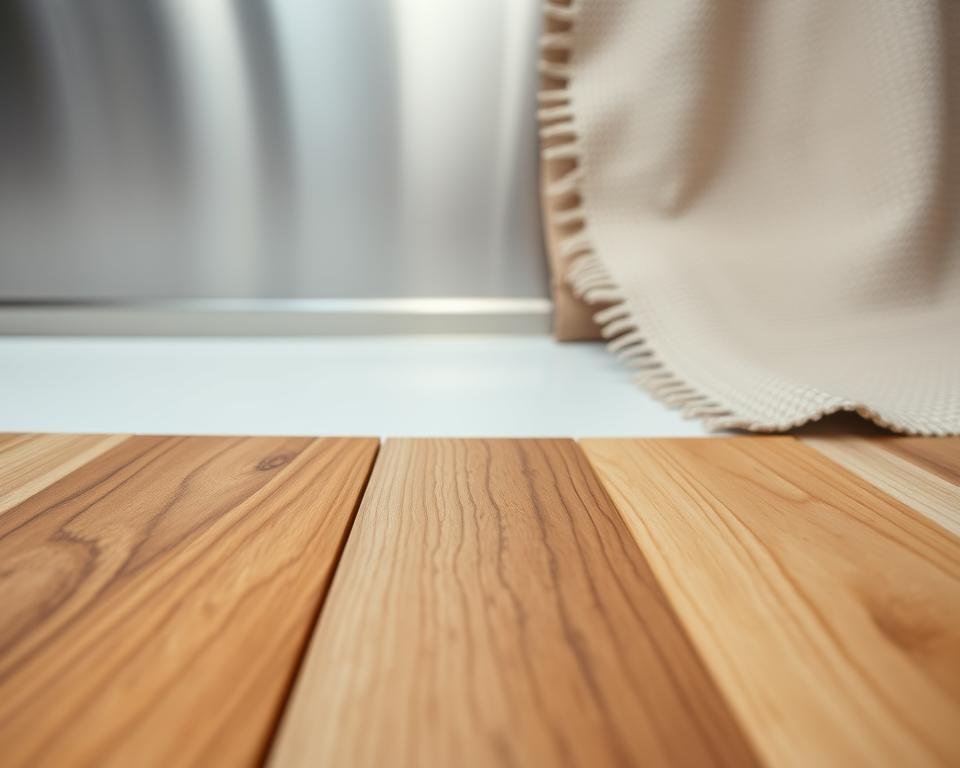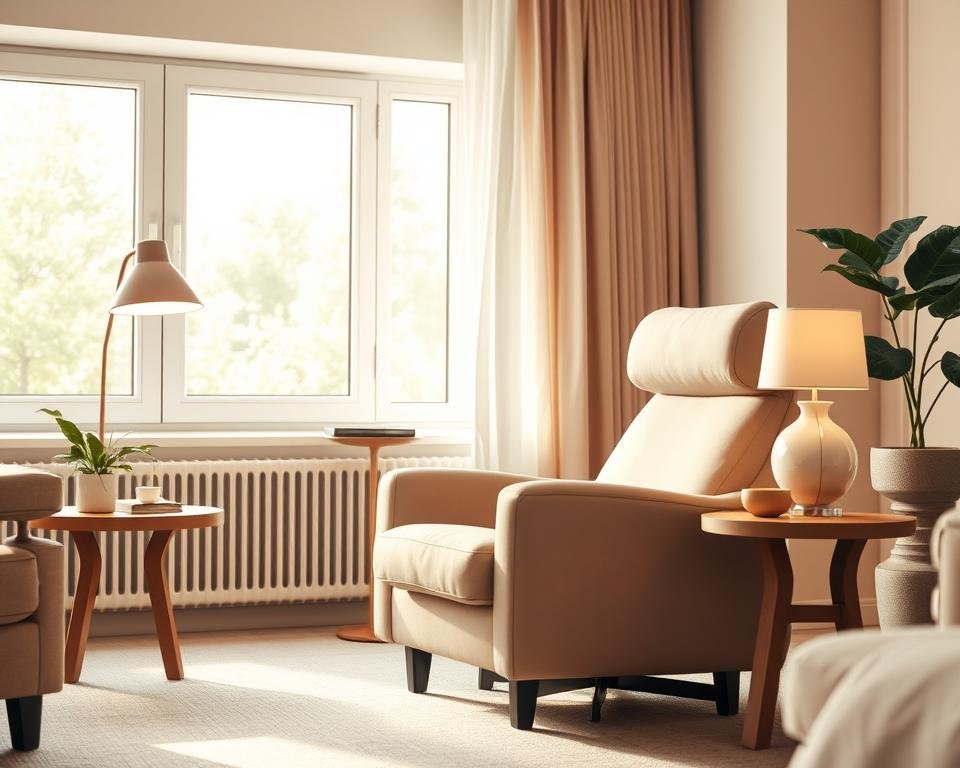“A house is more than a shelter; it should lift us up emotionally and physically.” — Frank Lloyd Wright’s words remind us that the pieces we choose for our spaces matter deeply. For those seeking comfort and ease in their daily lives, selecting the right items isn’t just about style—it’s about creating a home that supports you.
Imagine sitting in a chair that eases your joints, or a sofa that helps you stand without strain. The right choices can transform your daily routine, blending practicality with warmth. But when pieces are too low, too stiff, or poorly designed, they can turn simple moments into struggles.
This isn’t just about aesthetics. It’s about quality that lasts and designs that adapt to your needs. Whether you’re relaxing with family or hosting friends, your space should work for you, not against you. That’s why we’ve crafted insights to help you navigate options that prioritize safety, comfort, and effortless living.
Key Takeaways
- Focus on pieces tailored to your lifestyle and physical needs.
- Balance comfort with style to create a welcoming environment.
- Avoid designs that cause strain or inconvenience over time.
- Invest in durable materials that maintain their appeal for years.
- Use expert tips to simplify your decision-making process.
Understanding Senior Living Furniture Needs
Everyday movements should feel effortless, not like obstacles to overcome. The right pieces in your home can turn routine tasks into moments of ease. Let’s explore how thoughtful design choices address core needs while keeping your space inviting.
Safety and Accessibility Come First
Sturdy armrests and non-slip legs aren’t just details—they’re essentials. Rounded edges reduce bruising risks, while firm cushions provide stable seating. Look for items with wider bases to prevent tipping when leaning or standing.
Comfort That Adapts to You
Ergonomic designs align with your body’s natural posture. Seat depth should allow your feet to rest flat, and backrests must support your spine’s curve. Memory foam or medium-firm cushions offer relief for joints without sinking too deeply.
Your living space deserves items that blend practicality with warmth. Opt for textures that feel cozy yet are easy to clean. When testing pieces, ask: “Does this make my day simpler?” The answer will guide you toward choices that truly fit your life.
Evaluating Furniture Stability and Safety Features
Your home should empower you to move freely, not limit your confidence. Stability is the invisible hero in everyday moments—whether you’re settling into a favorite chair or rising to greet a guest. Pieces designed with secure construction keep you steady, blending safety into every interaction.

Stability as the Foundation for Mobility
A sturdy base isn’t just about durability—it’s about trust in your surroundings. Look for wide legs or reinforced frames that stay planted firmly on the floor. These features reduce wobbling, letting you shift positions without hesitation.
Firm back supports are equally vital. They help maintain posture while easing transitions from sitting to standing. Test chairs by gently leaning forward: if the piece stays grounded, it passes the mobility test.
Non-Slip Elements and Secure Construction
Rubberized feet or textured surfaces add grip, especially on smooth floors. These small details prevent sliding, giving you one less thing to worry about during daily routines. Check joints and seams for tight fittings—loose parts can compromise safety over time.
Prioritize designs where every element works together. Armrests with rounded edges, for example, offer leverage without sharp corners. When features align with your needs, they create a seamless flow between comfort and independence.
Remember: stability isn’t negotiable. It’s the quiet assurance that lets you focus on living, not balancing.
Choosing the Right Seating: Chairs, Sofas, and Recliners
Your choice of seating impacts more than just comfort—it influences your independence and ease. The right dimensions and support transform everyday moments, letting you relax or rise without strain. Let’s explore what makes seating both practical and inviting.
Ideal Seat Height, Depth, and Cushion Firmness
A seat height of 18-20 inches lets your feet rest flat, reducing pressure on knees. Depth matters too: aim for 16-18 inches so you can sit back without slouching. Cushions should be medium-firm—soft enough for comfort but supportive for easy standing.
Test sofas by sitting near the edge. If you need to push forward to rise, it’s too deep. Look for chairs with slightly elevated fronts to help you transition smoothly from sitting to standing.
Back Support, Armrests, and Lift Options
Lumbar-supporting backrests align with your spine’s curve, preventing slumping. Armrests at elbow height give you leverage when rising. Wider, padded designs add stability without digging into your sides.
Recliners with lift mechanisms tilt forward gently, using momentum to assist standing. Power options let you adjust positions with a button—ideal for stiff joints. These features blend discreetly into modern designs, proving safety doesn’t sacrifice style.
When seating works with your body, it becomes a tool for maintaining posture and confidence. Prioritize pieces that adapt to you, not the other way around.
Optimizing Durable and Easy-to-Clean Furniture
The right materials turn daily use into lasting comfort. Durable pieces blend practicality with timeless appeal, standing up to life’s routines while keeping their charm intact. Let’s explore how smart choices in construction and care create spaces that stay fresh and functional.

Materials, Fabrics, and Build Quality
Look for tight-knit performance fabrics like microfiber or treated cotton. These resist stains and spills while feeling soft to the touch. Tight seams and reinforced corners prevent fraying, even after years of use.
Firm cushions with high-density foam hold their shape better than down-filled alternatives. Pair them with kiln-dried hardwood frames—these resist warping and squeaking. Metal brackets or corner blocks add hidden strength to joints.
Maintenance and Cleaning Tips for Longevity
Vacuum fabric pieces weekly using an upholstery attachment. Blot spills immediately with a damp cloth—never rub. For deeper cleans, follow the manufacturer’s instructions or consult this expert maintenance guide.
Rotate seat cushions monthly to distribute wear evenly. Use furniture polish sparingly on wood surfaces—too much can leave residue. Simple habits like these keep your space looking polished while extending the life of your favorite pieces.
Your Senior-Friendly Furniture Buying Guide
Transforming your space starts with smart choices that blend practicality with personality. Let’s explore how expert insights can simplify your selection process while keeping your home stylish and supportive.
Expert Tips for Practical Selection
Follow these actionable tips to make confident decisions:
- Test seating by mimicking daily routines—sit, lean, and stand to assess ease
- Choose tables with rounded edges and adjustable heights for multi-use flexibility
- Prioritize lift mechanisms in recliners that match your mobility needs
- Measure doorways and hallways before purchasing to ensure easy delivery
One retailer shares: “Always ask about weight capacity—it’s the hidden factor in long-term durability.” This attention to detail helps you avoid costly mistakes.
Balancing Functionality with Aesthetics
Modern designs prove practical pieces can be beautiful. Look for:
- Subtle lift features hidden within sleek chair frames
- Performance fabrics in rich textures that resist stains
- Tables with integrated storage to reduce clutter
When comparing options, ask yourself: “Does this piece make my life easier while reflecting my style?” The right answer combines both elements seamlessly.
Remember—your home should evolve with you. By focusing on these insights, you’ll create spaces that support your independence while feeling authentically yours.
Incorporating Ergonomics and Design for Senior Living
The right blend of form and function can turn everyday moments into opportunities for comfort and confidence. Thoughtful design goes beyond looks—it shapes how you interact with your space, ensuring every piece supports your independence while reflecting your personal style.

Ergonomic Enhancements for Daily Comfort
Proper height and seat depth are game-changers. Chairs measuring 18-20 inches high let your knees rest at a 90-degree angle, reducing strain when standing. Seat depths of 16-18 inches keep your back supported without forcing you to slouch. “These measurements aren’t random—they’re based on decades of mobility research,” notes a physical therapist we consulted.
Look for pieces like:
- Armchairs with waterfall-edge seats that ease pressure on thighs
- Adjustable-height tables that adapt to reading or dining needs
- Sofas with built-in lumbar support and raised armrests
Aesthetic Designs That Promote Dignity
Accessibility doesn’t mean sacrificing style. Modern options feature clean lines and rich textures—think velvet-upholstered lift chairs or walnut-finished tables with discreet slide-out trays. These designs blend seamlessly into your decor while offering practical benefits.
Wider doorways on cabinets, lever-style handles, and slip-resistant rugs underfoot all contribute to safer navigation. When your space feels intuitive to use, you spend less energy maneuvering and more enjoying life’s simple pleasures.
By prioritizing both ergonomics and elegance, you create a home that honors your needs and your taste. After all, true comfort comes from feeling supported in every sense.
Selecting Furniture for Senior Care: Bedrooms and Bathrooms
Your bedroom and bathroom should be sanctuaries of comfort—spaces where every detail supports your well-being. Thoughtful design in these rooms reduces risks while fostering independence, blending safety with serenity. Let’s explore how to create environments that feel both secure and inviting.
Bedroom Essentials for Safety and Ease
Start with a bed height that allows you to sit with feet flat on the floor. Adjustable bases let you raise or lower the mattress for easier entry and exit. Keep pathways clear: leave 36 inches around the bed for walkers or wheelchairs to maneuver comfortably.
Nightstands with pull-out trays or built-in lighting simplify nighttime routines. Opt for low-pile rugs secured with non-slip pads to prevent tripping. Open shelving or shallow drawers keep essentials within reach without excessive bending.
Bathroom Accessibility and Secure Fixtures
Walk-in showers with built-in benches and handheld showerheads make bathing safer. Install grab bars near toilets and tubs—choose textured finishes for better grip. Wall-mounted vanities allow space for seated use, while lever-style faucets require minimal hand strength.
Non-slip flooring is non-negotiable. Pair it with a shower curtain that curves outward to contain water. Keep towels and toiletries on open shelves or sliding racks to avoid overreaching. Every choice should minimize effort while maximizing confidence.
When your rooms align with your needs, they become partners in daily life. From bedroom layouts that ease morning routines to bathroom designs that prevent slips, intentional selections help you move through your space with assurance.
Conclusion
Thoughtful choices in your home create a foundation for comfort and independence. From seat depth that supports posture to stable bases that ease standing, every detail matters. These elements work together to reduce strain and boost confidence in daily routines.
Sturdy construction keeps you secure, while ergonomic shapes adapt to your movements. Durable materials ensure pieces stay reliable year after year. When design prioritizes both safety and style, your space becomes a true partner in living well.
Remember: the right selections turn challenges into effortless moments. Whether adjusting seat heights or choosing slip-resistant finishes, each decision shapes your environment. Use this guide’s insights to blend practicality with personal taste, creating rooms that feel uniquely yours.
Your home should grow with you—embracing changes without losing warmth. By focusing on what truly supports your needs, you’ll craft spaces where every day feels lighter, safer, and full of possibility.
